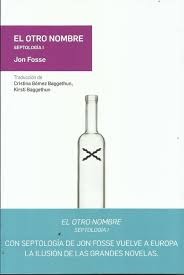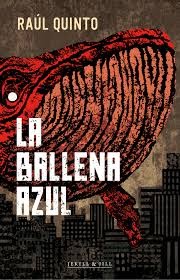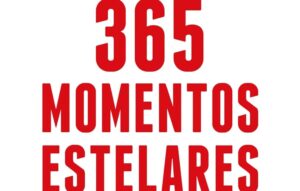
Original language: Norwegian
Original title: The second name
Translation: Cristina Gómez Baggethun y Kirsti Baggethun
Year of publication: 2019
Valuation: Highly recommended
These things sometimes happen, rarely but sometimes they do. Now I know that Jon Fosse is a fairly prolific author, who has been publishing novels, plays and poetry for about forty years, and has been a candidate for the Nobel Prize for some time. But I, ignorant of all this, discovered him by pure chance, we could say by intuition, on the shelf of a certain bookstore that I have talked about several times. A book that seemed to have something interesting, the first of a septology (!), something that, looking at it as it went, looked like modern, fresh prose… The fact is that the book moves to the queue of the pending books, and remains there in the shelf placed near other Nordic authors, such as Enquist, Ulven or Kivirähk. And suddenly, it turns out that he is awarded the Nobel Prize. On the one hand, I feel a little proud of my literary nose, and on the other hand a little ashamed of having had it collecting dust for so long.
The aforementioned septology is one of his most recent works, started in 2019, and the one we have here, the first of his deliveries that, from the little I know, seems very influenced by some personal experiences in relation to alcohol and religion.
The internal monologue is a narrative resource that I believe has been somewhat abused. Perhaps it seduces some authors because, although it is already quite old, it retains a modern appearance, even more so if the rules of syntax are somewhat forced or punctuation marks are hidden, for example. Furthermore, it seems easy to use, all you have to do is start ramblings mixing many things, let your thoughts flow and generate a feeling of confusion and intensity. The result is not always good, but when it is achieved, the reading becomes suggestive and the information penetrates in a penetrating way.
Jon Fosse does it very well. His monologue merges at times with a first-person story, and in it we find reflections, memories, desires, perhaps dreams, real scenes, without it being possible, and it is one of his great achievements, determining which of these groups he belongs to. what is told. Different possibilities of the same life, the options that were abandoned and those that fate made impossible, are presented simultaneously in the same apparently coherent story, all starring a single character who unfolds himself, observes himself or his partner. another possible self, and interacts in those other scenarios, past or imagined, perhaps trying to amend them, or just to remember them. If you want, the nonsense of autofiction, yes, but when it is made to really work it is as valid an option as any other.
The painter who placed the paintings facing the wall until he had found the light he was looking for in them, the alcoholic on the verge of collapse, the man who lost his partner and who does not remember if he had a child or if he only wanted one, one and several characters who, from their small isolated houses, seem to be attracted to the city, where perhaps the knot where all the trajectories meet is found.
This immersion between darkness and snow that falls incessantly has something unhealthy, it causes a certain uneasiness and conveys the deep tiredness that weighs on the protagonist. But the reader, at least me, is left with the gratifying feeling of realizing that he or she is outside of that gloomy and crushing world, and can enjoy wonderful scenes like the one of the couple hanging out in a lonely playground without further ado. incentive than feeling together, or the successive falls of the painter, perhaps a biblical wink, while waiting for the brandy. The double presence of the reader, inside and outside the story, at times immersed in the narrative, seeing, feeling, perhaps suffering, and a second later safe in the armchair of his house.
A lot of talent to bring all this complexity to fruition, or rather, first create it from something that appears so simple, and then develop it and culminate it by creating the appropriate atmosphere, only based on intelligence, a good hand and clean prose, without tricks. nor artifices. Come on, quality enough to leave one very close to going for the second volume, and starting to correct errors.
Source: https://unlibroaldia.blogspot.com/2024/04/jon-fosse-el-otro-nombre-septologia-i.html


